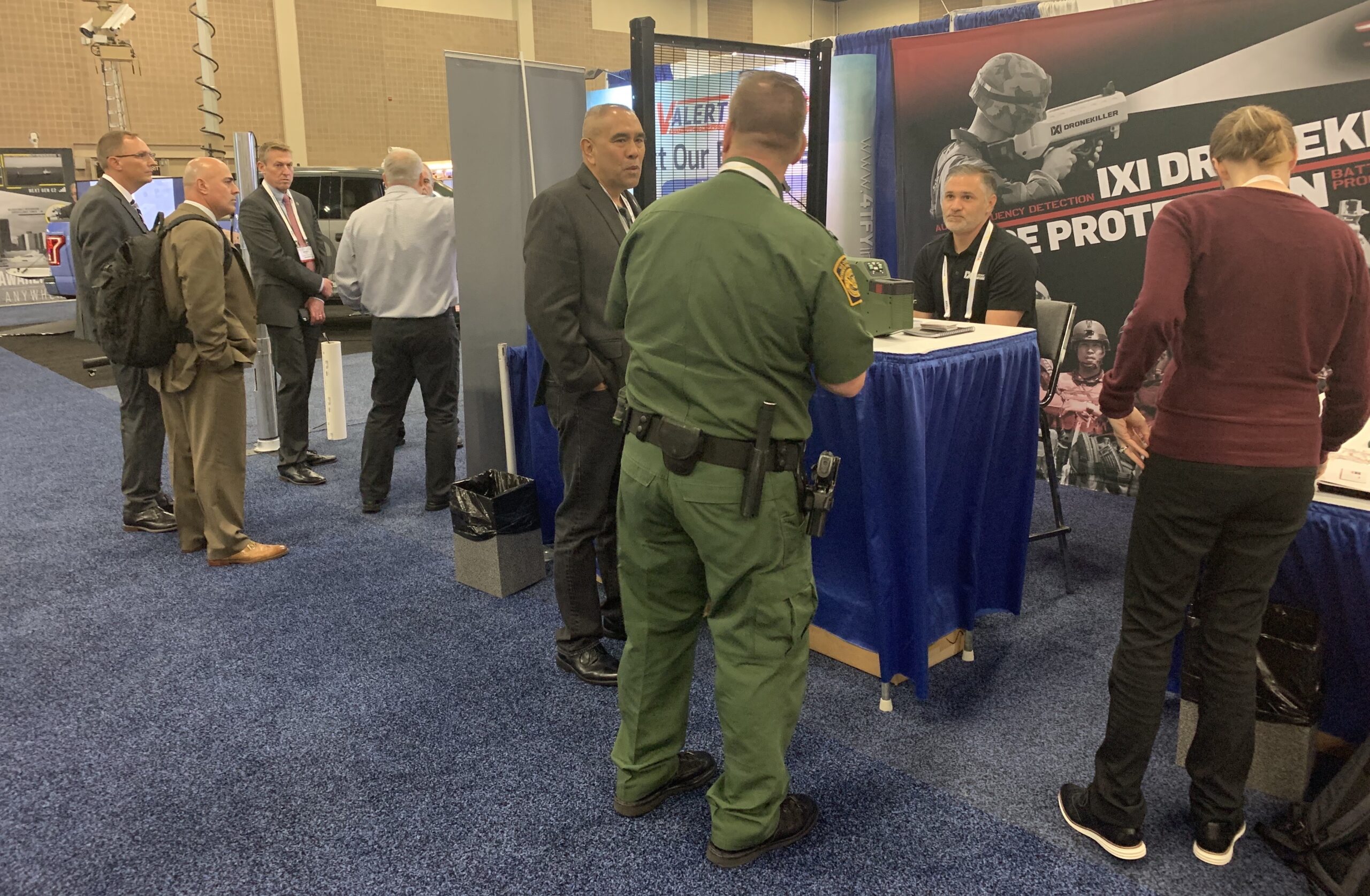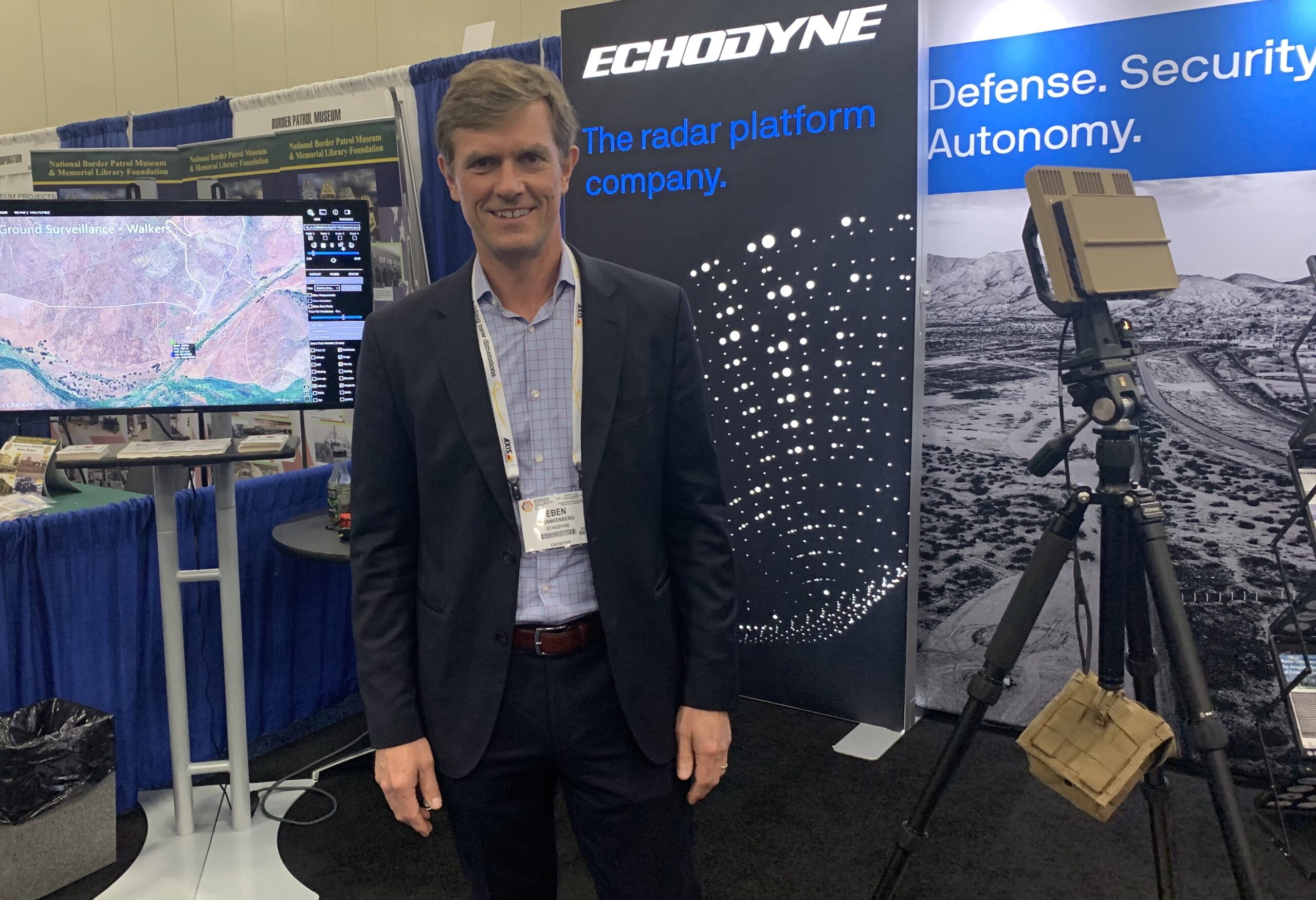SAN ANTONIO — More than 100 companies descended on the convention center this week in hopes of showing border officials products they believe can be used to carry out homeland security missions.
The Border Security Expo drew 1,100 attendees this year, including employees from 50 federal, state, and local law enforcement agencies. The event’s panels and speeches by senior DHS officials are meant to give the private sector a better grasp of what is needed and how to go about fulfilling those needs. The expo portion gives public officials an in-person chance to test out some of the latest technology and products.

Attendance has more than doubled since the 500 guests in 2018 as the Trump administration puts a heavy focus on the border wall and funding for border agencies. This year, companies with products ranging from biohazard detection systems and infrared imaging to license plate readers and retinal scanners were on site.
A ladder as tall as the border wall
With hundreds of miles of border fence going up between the United States and Mexico, Border Patrol may need a fast and easy way to access the top of the fence for the rare but not unprecedented occasion that someone or something gets on top.
Telesteps demonstrated how its telescopic ladder is portable and can be pulled out to stand 18 feet tall, the height of most of the border fence. Unlike step ladders, they are solely vertical and collapse to be just three feet tall.

Tiny but powerful radars that detect drones a mile away
Echodyne, whose largest investor is Bill Gates, makes 3D radar sensors that can be used to detect and track drones that fly near the border. A traditional radar, such as one used by an airport traffic controller, looks like a big dish that constantly rotates to detect activity, presenting data on a two-dimensional grid. The EchoGuard is electronic and does not have any moving parts. Normal radars can scan either the horizon or the sky, but this one can capture a large amount of sky and wide portions of the ground. The activity is then reflected onto a screen so users can see, similar to the airport controller, any device that transmits a signal as it flies.
The radar can detect a mini drone from half a mile away and a larger drone a mile out. CEO Eben Frankenberg said setting up three of the radars and facing them toward different parts of the land and sky would give the operator a constant picture of all surroundings.

A dehydration solution for migrants and agents
DripDrop produces an individually packaged, flavored powder that can be poured into a bottle of water to quickly aid someone who is dehydrated. Each packet contains electrolyte levels that meet the World Health Organization’s “oral rehydration solution” levels. It has three times the electrolytes as sports drinks but less sugar.
Its maker is neither beverage nor pharmaceutical company. The product was invented two decades ago by a doctor working in Guatemala during the 1993 cholera outbreak. The doctor had struggled to treat people with severe dehydration, especially children who spit up bad-tasting salty beverages. When he came back to the U.S., he came up with DripDrop. Its fruit flavors include one that tastes like a Jolly Rancher, which would appeal to children.
It could be used by Border Patrol in remote areas and could be given to dehydrated migrants after they are taken into custody.
Silent, eco-friendly ATVs
Clean and silent — words that typically are not associated with all-terrain vehicles. DRR USA describes its Stealth Electric ATV as an ideal rescue vehicle for people lost in national parks or remote areas that a regular vehicle either cannot access or would disturb animals and pollute a protected area. The company thinks it could also be used along the border in situations where Border Patrol needs to approach suspicious activity without being detected.
The company was created about 20 years ago for the purpose of building ATVs that were safe for children following an accident that involved the owner’s child. The child-friendly ATVs had considerably more safety features than other items on the market. Two years ago, the company took action after learning that searchers in North Carolina were having trouble finding missing autisitc children. The sound of search vehicles could scare a child sensitive to loud noises and lead him or her to hide from rescuers.
Now, the company thinks what it invented for one purpose may also serve another. The eco-friendly ATVs are made with 1,000 fewer parts than a regular ATV and can travel up to 35 miles per hour. They are battery operated and can last 150 miles. They also emit less heat — a perk when it is 100 degrees on the border.

